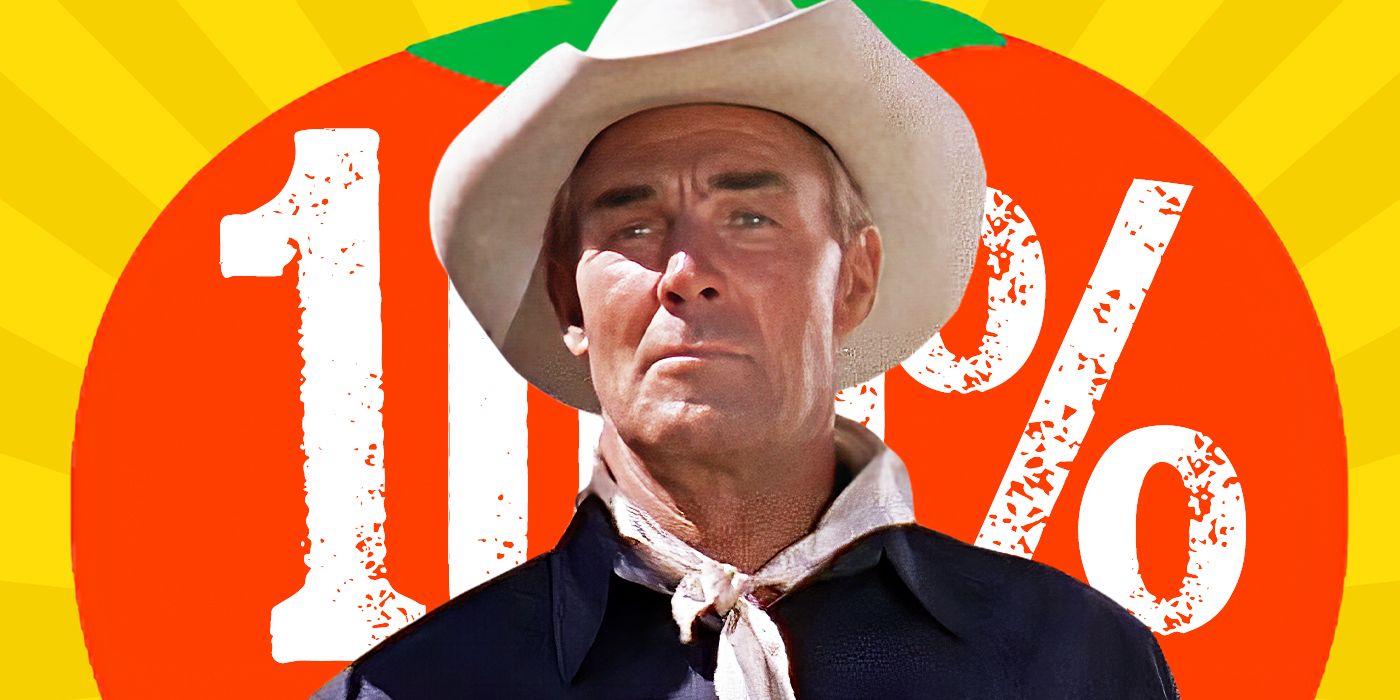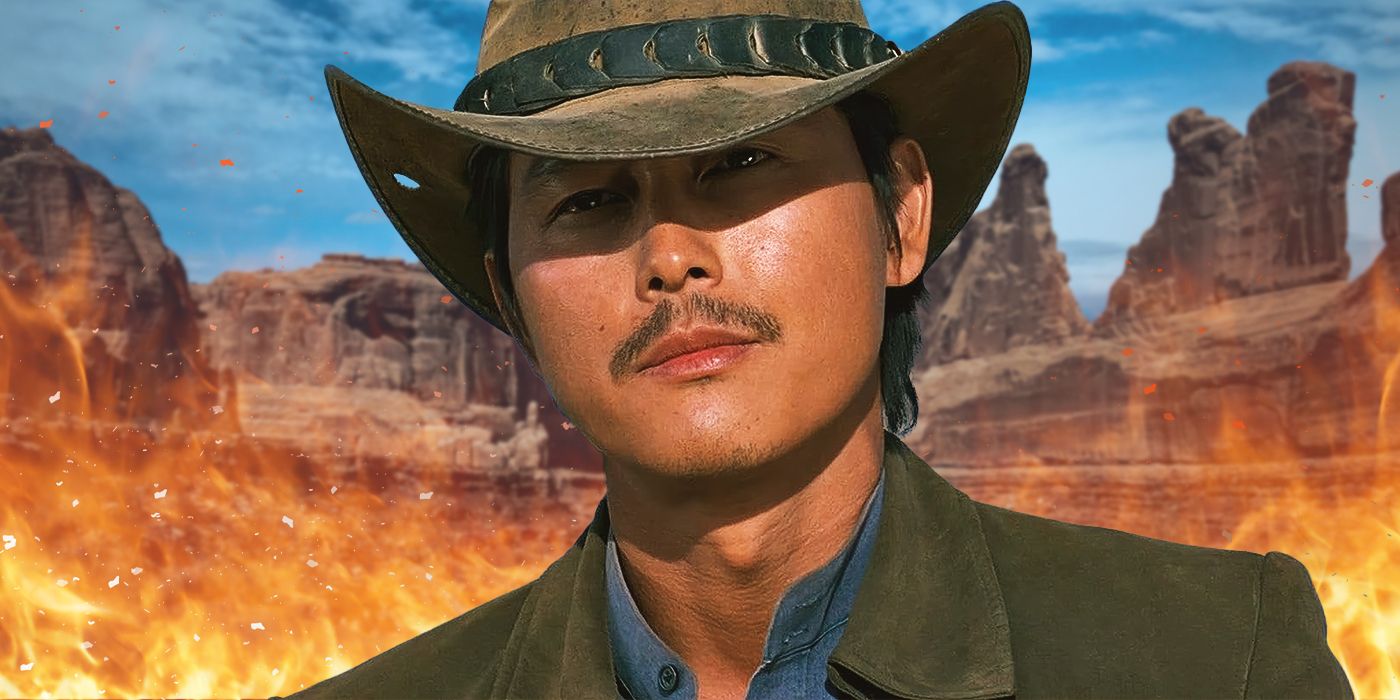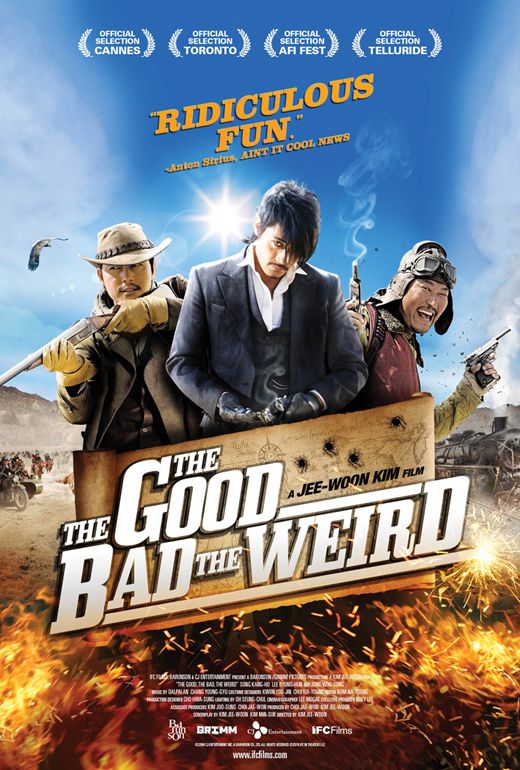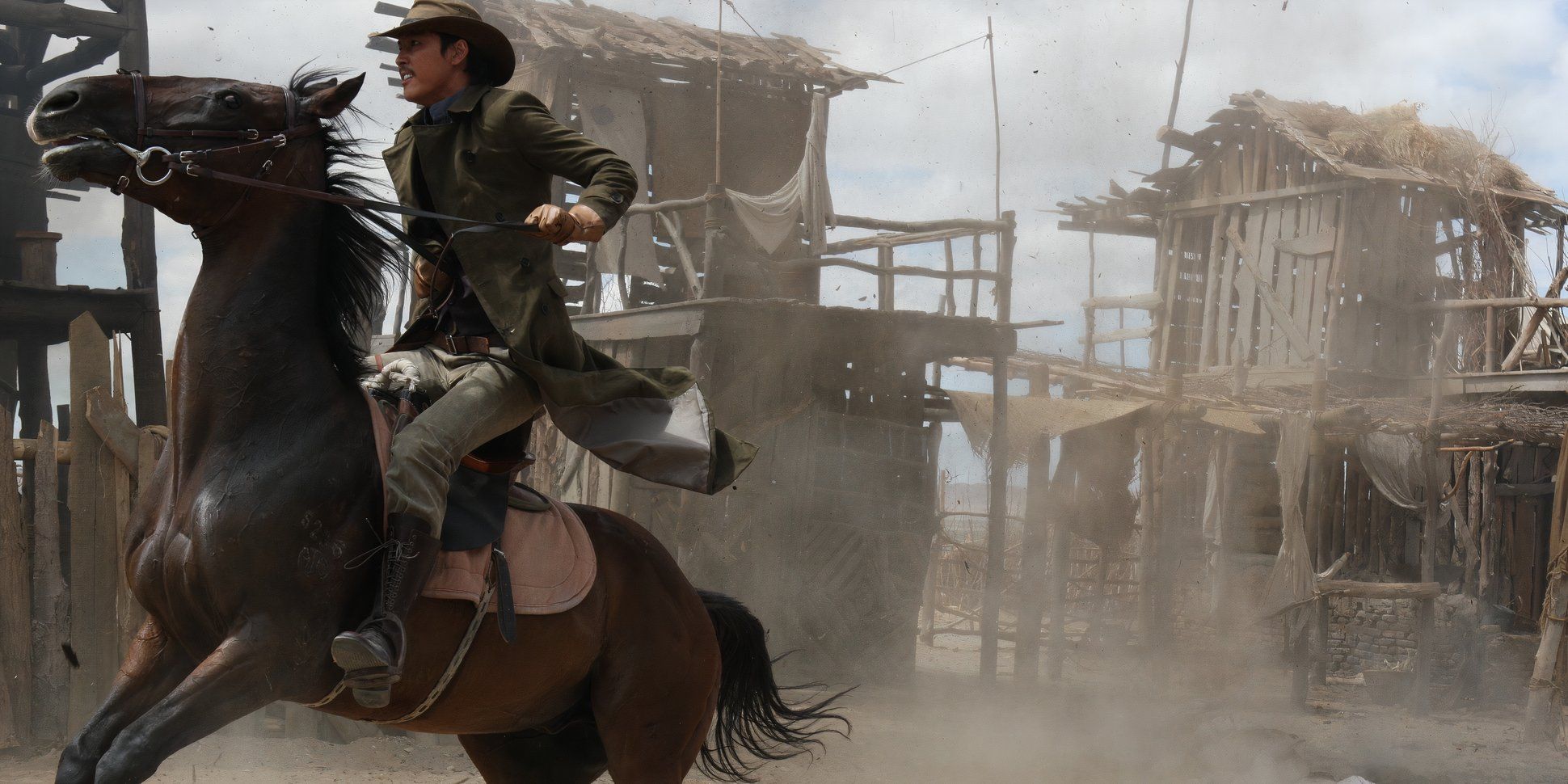The Big Picture
-
The Good, the Bad, the Weird
blends Western and Eastern cinema in a fast-paced, stylish, & modern spectacle film. - Kim Jee-Woon’s take on Sergio Leone’s classic,
The Good, the Bad, and the Ugly,
adds humor, violence, & unique visual style to the familiar genre. - Characters in the film navigate moral ambiguity and complex motivations, exploring themes of greed & survival in a unique way.
For fans of the Western movie genre, nothing captivates like a good story against rugged landscapes, the silhouette of a lone cowboy fighting off a posse, epic saloon brawls, and bursts of thrilling gunfights. Now, picture such a Western that, in addition, is also fast-paced, stylish, modern, and with high stakes. That’s what South Korean director Kim Jee-Woon offers with The Good, the Bad, the Weird, a 2008 genre-bending film inspired by Sergio Leone‘s 1966 Spaghetti Western The Good, the Bad, and the Ugly. Not just a Korean adaptation of Sergio Leone’s classic, The Good, the Bad, the Weird is a testament to a story that has come full circle.
Sergio Leone’s The Good, the Bad, and the Ugly is itself part of the Dollars Trilogy, whose first outing, the 1964 film A Fistful of Dollars, was an unofficial remake of the legendary Japanese director Akira Kurosawa‘s 1961 film Yojimbo (contention over this successfully contested in court by the film’s production house). The Good, the Bad and the Ugly is considered a prequel in the trilogy in which Akira Kurosawa’s ideas got an American Old West twist shot in Europe. In The Good, the Bad, the Weird, Kim Jee-Woon injects the idea with some of its original Asian sensibilities while fusing into the picture fast-paced action, humor, and a unique modern visual style, making it a fun standout in the Western genre.
What’s ‘The Good, the Bad, the Weird’ About?
Paying homage to Sergio Leone’s Spaghetti Western, The Good, the Bad, the Weird features three outlaws – a determined bounty hunter Park Do-won (the Good, played by Jung Woo-sung), a ruthless gang leader Park Chang-yi (the Bad, played by Lee Byung-hun), and a sharp-witted quirky thief Yoon Tae-goo (the Weird, played by Song Kang-ho) – all in pursuit of a treasure map promising untold riches in Japanese-occupied late 1930s Manchuria, just before the second world war. The three are Koreans who have fled their Japanese-occupied homeland for Manchuria, only to find the Japanese also control their new territory. It’s not just the trio vying for the coveted treasure map; but the Japanese Imperial army, seeking to bolster their waning empire, and desert bandits, drawn by the allure of wealth, are also in hot pursuit.
The story unravels when Park Chang-yi is hired by a Korean aristocrat collaborating with the Japanese to rob a train and acquire the map from an official. Yoon Tae-goo, a renowned thief, inadvertently beats him to it. Park Chang-yi, who has arrived at the train scene, causes havoc, killing guards and civilians alike, and creating a stumbling block for Yoon Tae-goo’s escape. Keen on the events of the day is bounty hunter Park Do-won, who hopes to capture and cash in on Park Chang-yi. This introductory train sequence sets a frenetic pace for the rest of the movie. The three — each with their own motivation — alongside the army and the desert bandits, provide a thrilling chase for hidden treasure throughout the film. As the story unfolds, we learn more about the trio — their backstories, their motivations, and their aspirations.
‘The Good, the Bad, the Weird’ Prioritizes the Spectacle Over Sentimentalism
Kim Jee-Woon’s The Good, the Bad, the Weird goes for high-octane action and visual spectacle over traditional sentimental storytelling. The film’s cinematography captures the vast, dusty landscapes typical of Westerns, but it also incorporates vibrant, dynamic elements that set it apart. The use of color, movement, and composition creates a visually stunning experience. The opening action-packed, exhilarating train heist immediately sets a breakneck pace that seldom lets up. But Kim Jee-Woon’s film isn’t just another Old West-like action film. His choreography of wild desert chases, intense gunfights, and explosive set pieces are designed to dazzle the audience. There are scenes where horses and automobiles merge in a gigantic desert chase. Sometimes, the action is somewhat slapstick, but Kim Jee-Woon’s focus is to entertain rather than to immersively absorb the viewer in the story.
With a masterful blend of Western and Eastern cinema, The Good, the Bad, the Weird creates a unique visual style that is both chaotic and meticulous. While the Manchuria deserts in the film are as hardy as the Old West, and by extension, the Spaghetti Western deserts, the production design has a modern feel that is rich with Asian culture. Whether it’s the film’s colorful costumes and decor, or the spectacular entertainment joints replacing dusty Old West saloons, the focus on its visual and action-packed storytelling creates an engaging viewing experience.

Related
This Western Classic With 100% on Rotten Tomatoes Doubles as a Grim Revenge Thriller
The John Wayne-produced movie offers a raw, unflinching take on the Western genre.
The Good, the Bad, the Weird’s preference for spectacle is in line with the film’s choice of a lighter, more entertaining approach. Its protagonists, while well-portrayed, act as vehicles for the plot’s relentless momentum rather than subjects of deep emotional exploration. Yes, the film delves into their past to make us understand their motivations and aspirations, but it does it so slowly that some important revelations come at the near end. Even then, the motivations can be humorous. Like learning that Yoon Tae-goo’s dedication to securing the loot from the treasure map is so that he can go back to his native land and rear chickens and horses. Yet, the absence of this emotional depth is not a distraction. The high-stakes life-and-death situations that the characters find themselves in provide enough cushion for an enjoyable film.
‘The Good, the Bad, the Weird’ Is a Generous Dose of Humor and Violence
If you fancy intense and stylized onscreen violence, The Good, The Bad, The Weird offers the perfect dose. Kim Jee-Woon doesn’t shy away from showcasing high-stakes brutal confrontations that range from the use of knives, hand-to-hand combat, and gunfights. In The Good, The Bad, The Weird, violence is both brutal and mesmerizing, with the fights crafted to precision. In his take on the film, fingers are chopped off, daggers are planted in necks and not-so-print-worthy parts of the human anatomy. It is a mix of violence and dark humor. Even when the stakes are high, the film manages to tickle. This is particularly notable in a scene in which Yoon Tae-goo, the Weird, has to go across a street full of gun-blazing bandits. In the scene, Tae-goo is teaming up with Park Do-won, the Good, and he is asked by Do-won to cross the street so that he “can tell the direction the bullets are coming from.” He responds by asking Do-won to advise whether he should walk in a straight line or in a zigzag manner to confuse the shooters. Such unexpected moments of humor make The Good, the Bad, the Weird a palatable movie.
Kim Jee-Woon’s balance between the film’s darker elements and a generous dose of humor makes a unique tonal blend that sets The Good, the Bad, the Weird apart from other Western movies. The film’s humor stems from the absurdity of situations and the quirky personalities of the characters, particularly Song Kang-ho’s Yoon Tae-goo. He has an obsession with a baby’s helmet that he struggles to wear, his motivation for the heist is hilarious, and his well-scripted wacky dialogue works like magic. Song Kang-ho’s performance, particularly his comedic timing, is impressive and provides a counterbalance to the film’s intense moments. Park Chang-yi’s, the Bad, ruthlessness, on the other hand, creates a contrasting violent intensity that raises the stakes. The humor interwoven with the action sequences further enhances the film’s spectacle-first approach, providing a refreshing take on Sergio Leone’s classic.
The Good, the Bad, the Weird Veers Off the Classic Western Movie
In place of clear-cut moral lines and romanticized heroes of the traditional Western movie, The Good, the Bad, the Weird presents a world of moral ambiguity. Each of its characters can fit into any of the labels that form its title. The protagonists are all anti-heroes, trained killers with questionable motivations. Park Do-won, the Good, is motivated by the desire to claim bounties, changing his focus depending on how steep the bounty is. Park Chang-yi, the Bad, is portrayed as inherently greedy and ruthless, but as the story develops, we learn how complicated and flawed that singular perspective of him is. Yoon Tae-goo, the Weird, a charming character who drives the film, makes questionable decisions, but we rally behind him because he is so relatable, even in his goofy flaws. The film’s portrayal of each character’s human side makes us empathize to a large extent with each of them.
Thematically, the film delves into rarely charted paths for the Western genre, covering subjects like colonialism and its impact on its characters’ lives. Even in his ruthlessness, when Chang-yi kills a compatriot for enriching himself by collaborating with the oppressor, we feel the agony of his pain. The film further raises questions about greed, survival, and the price one is willing to pay for wealth. While these themes are not unique to the genre, the way they are tackled — without any romanticization — makes them unique in the film.
Kim Jee-Woon’s The Good, the Bad, the Weird beautifully combines elements of traditional Westerns with a fast-paced, stylish, and modern sensibility, creating a film that is both familiar and refreshingly new. Its captivating characters, stunning visuals, and relentless energy not only honor its Western roots but also add a feather in the genre’s cap. There are two versions of the film, one targeting the international market and a slightly different cut for its domestic audience. The domestic version offers a bit more depth to the characters, but they remain very similar. On its release, the film was a great success and remains one of the highest-grossing South Korean films. Whether you’re drawn by the thrill of the chase, the depth of characters, or the sheer spectacle of a Western movie set piece with a modern twist, The Good, the Bad, the Weird promises an adventure that is as thought-provoking as it is entertaining.
The Good, the Bad, the Weird is available to stream on AMC+ in the U.S.











